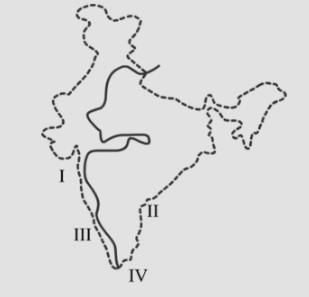Important Questions Test: Land, Soil Water, Natural Vegetation And Wildlife Resources - Class 8 MCQ
20 Questions MCQ Test Social Studies (SST) Class 8 - Important Questions Test: Land, Soil Water, Natural Vegetation And Wildlife Resources
How much per cent of the earth’s area is occupied by Ocean?
What does the zig-zag line indicate on the map of India?


The example of a common property resource is
______is the use of land for different purposes like agriculture, forestry, mining, construction of buildings, houses, industries, and road.
Which of the following determines the use of land?
Which of the following factors may contribute to water shortages in Australia and other countries located in drought-prone climatic zones?
The lowermost layer of the soil is:
Which is not an example of groundwater?
Which of the following is a famous bird sanctuary?
Why is it necessary to increase the area under forests?
Large scale destruction of forests cover and arable land has occurred due to the following:
The quality of land differs from place to place.
Natural resources are essential for the economic development of a country.
How much per cent of the earth’s area is occupied by land?
Private land properties are owned by
Which of the following steps is a significant threat to the environment?
The type of soil is determined by
As the exposed rock break off and start decaying due to temperature change, this process is called
Soil is made up of
Mass movement of rocks down the hills could be a sign of
|
65 videos|424 docs|46 tests
|


















